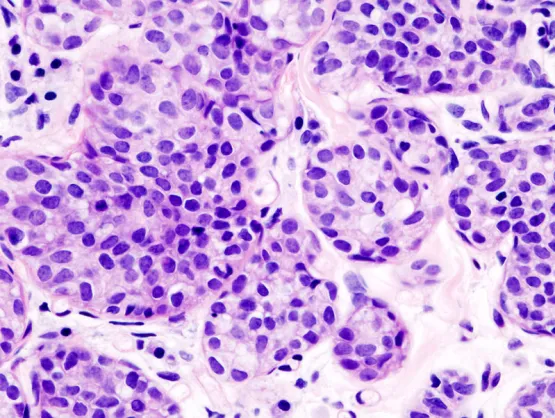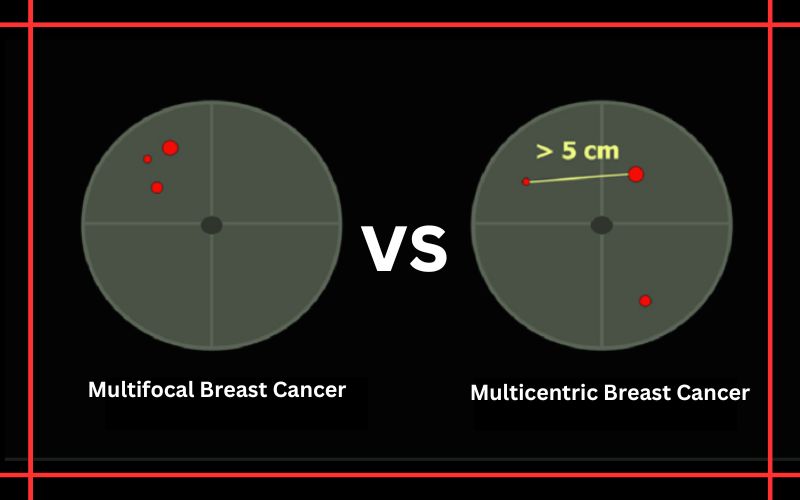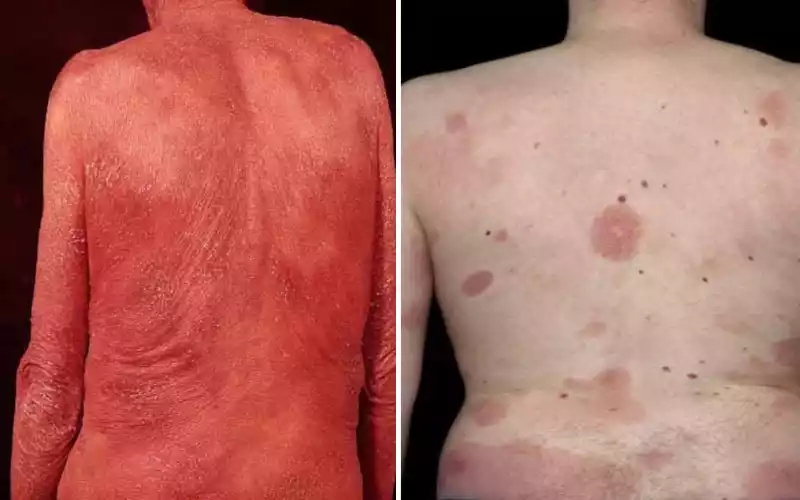Fact Check: 10 Common Misconceptions About Multifocal and Multicentric Breast Cancer
Multifocal and Multicentric Breast Cancer
Multifocal and Multicentric Breast Cancer involves the presence of multiple tumor masses, but they differ in the distribution and relationship of these masses within the breast.
Multifocal breast cancer refers to the presence of multiple cancer masses within a single area of the breast typically having a common ductal system. It is important to differentiate the multicentric form of breast cancer which is when separate tumors develop in various quadrants of the same breast.
The process of identifying multifocal tumors usually sophisticated imaging techniques and exact biopsy methods to establish precise diagnosis.
The treatment may include the use of radiation, surgery or systemic treatments. Breast cancer that is multicentric poses additional issues due to its distinctive cancer origins. This requires individualized treatment strategies for each tumor. Diagnostics are based on thorough imaging which often involves specific biopsies.
Knowing the differences between them is essential to make the right treatment choices because they affect treatment options and prognosis. The advancements in genomics, imaging as well and personalized medicine offer the potential for improving the treatment of multicentric as well as multifocal breast cancers.
Multifocal Breast Cancer

Multifocal breast cancer is an uncommon manifestation of breast cancer characterized by several distinct tumors within one breast, though they may appear physically separate from each other. They still count as part of one common diagnosis as they share a ductal system and malignant source – unlike multicentric forms that form distinct tumors in different quadrants on either breast.
Recognizing multifocal breast cancer requires using advanced imaging methods such as mammography, magnetic resonance imaging (MRI), and ultrasound. These imaging techniques help detect tumors of various sizes and features.
Imaging techniques also serve to establish their exact numbers, sizes, locations, and characteristics; furthermore, specific biopsy methods like core needle biopsy can be employed to examine tumors for aspects like their nature as well as grades or conditions.
Strategies for treating multifocal breast cancers can be tailored specifically to each cancer, depending on its characteristics. Surgery options for treating multifocal cancer include partial (lumpectomy) or complete removal (mastectomy).
Radiotherapy may be utilized post-surgery to address affected areas; hormone therapy, chemotherapy or targeted therapies may also be advised based on tumor characteristics.
Surviving multifocal breast cancer varies, depending on several factors including tumor size and grade, hormone receptor status and effectiveness of treatments. Regular monitoring, frequent follow-up visits as well as collaboration among medical specialists from multiple disciplines is crucial in successfully treating multifocal breast cancer patients.
New developments in diagnostic imaging as well as personalized and targeted therapies hold out hope of improving results while tailoring plans specifically to each multiple breast cancer patient’s particular characteristics.
Causes of Multifocal Breast Cancer
Genetic Predisposition: Gene mutations such as BRCA1 and BRCA2 increase your risk of breast cancer, and have been linked with multifocal breast cancers as well as other forms.
- Hormonal Imbalances: Estrogen and progesterone play an essential part in the formation of breast cancer, with receptor-positive tumors often being caused by hormonal imbalances that influence growth. Multifocal cases tend to be the product of hormonal dysfunctions.
- Age and Gender: Being female and growing older are both major risk factors for breast cancer, including multifocal forms.
- Family History: If a close relative has had breast cancer, that increases their risk.
- Previous Breast Cancer: Having had one case of breast cancer increases your risk for it in both of your breasts or for developing multifocal tumors.
- Radiation Exposure: Early exposure to high doses of radiation therapy used for other cancers, such as during radiotherapy for breast cancer, may slightly increase your risk.
- Obesity: Being overweight or obese after menopause increases your risk of breast cancer significantly.
- Lifestyle Factors: Subpar lifestyle habits such as excessive alcohol consumption, inactivity and poor diet could raise breast cancer risks.
- Reproductive Factors: Early menstruation, late menopause and having your first child at an older age all increase hormone exposure and can influence breast cancer risk.
- Environmental Factors: Exposure to environmental toxins and pollutants could play a part in the onset of breast cancer.
Symptoms of Multifocal Breast Cancer
- Lump or Mass: One of the first indicators is an unusual lump or mass in your breast or underarm area that feels different than its surroundings.
- Unexplained Change in Breast Size or Shape: Sudden changes to breast size, shape or appearance could signal an underlying condition that needs further investigation.
- Changes to Your Breasts’ Surface: Dimpling, reddening or thickening of breast skin could be a telltale sign of breast cancer.
- Nipple Changes: Any noticeable modifications in the nipple, such as inversion, scaling or discharge may be indicative of breast cancer.
- Pain or Sensation: Any unexplained breast or nipple pain, as well as persistent warmth or itching sensations, should be investigated further.
- Swelling or Enlargement: Swelling in part or all of the breasts can occur. This condition may lead to swelling of either part or all of the breast.
- Changes in Skin Texture: Due to changes in underlying structures, skin may become rough or have the look of orange peel (peau d’orange).
- Unexpected Weight Loss: Breast cancer treatment may contribute to unexpected weight loss.
- Breast Asymmetry: Subtle changes to breast symmetry can sometimes signal deeper issues that need addressing.
Multicentric Breast Cancer

Multicentric breast cancer is a distinct form of breast cancer characterized by multiple tumor masses arising independently in different quadrants of one breast or both, rather than sharing an origin and ductal system, making diagnosis, staging, and treatment planning even more complex.
Finding multicentric breast cancer requires comprehensive imaging techniques like mammography, magnetic resonance imaging (MRI), and ultrasound. These imaging modalities help detect and characterize each tumor mass to identify their size, location and relationship to surrounding tissues.
Accurate biopsy techniques must then be employed in order to sample each tumor sample and analyze its unique histological type, grade, and receptor status characteristics.
Managed effectively, multicentric breast cancer requires an individualized treatment approach for each tumor mass. Treatment plans depend on factors like tumor size and type.
Health status treatment options may include surgery (lumpectomy or mastectomy), radiation therapy, and systemic therapies such as chemotherapy, hormone therapy or targeted therapies among many other possibilities. A multidisciplinary medical team collaboration is crucial in creating the most effective strategy.
The prognosis for multicentric breast cancer varies depending on its individual characteristics, response to treatment and overall disease management. Therefore, regular monitoring, follow up and communication between healthcare providers is necessary to track each tumor’s development and ensure timely interventions when needed.
Causes of Multifocal Breast Cancer
- Genetic Predisposition: BRCA1 and BRCA2 gene mutations increase your risk of breast cancer and are linked with multifocal as well as other types of this cancer.
- Hormonal Imbalances: Estrogen and progesterone hormones play an essential role in the formation of breast cancer, particularly hormone receptor-positive cases that develop multifocally. Hormone imbalances play an influence role when multifocal breast cancers arise due to receptor-positive receptors being affected by hormone imbalances.
- Age and Gender: Being female and getting older are major risk factors for all forms of breast cancer, including multifocal.
- Family History of Breast Cancer: Studies have demonstrated that having close relatives who have breast cancer increases your risk.
- Previous Breast Cancer: If you have had breast cancer before in one breast, having it again increases the chances of it in both. Also, multifocal tumors could develop.
- Radiation Exposure: Early exposure to high doses of radiation therapy used to treat other cancers may increase your risk of breast cancer by up to 25%.
- Obesity: Being overweight or obese after menopause increases your risk of breast cancer significantly.
- Lifestyle Factors: Unhealthy lifestyle habits such as excessive alcohol consumption, physical inactivity, and poor diet could increase breast cancer risk.
- Reproductive Factors: Factors such as early menstruation, late menopause and having your first child at an older age may all have an effect on hormone exposure and therefore influence breast cancer risk.
- Environmental Factors: Long-term exposure to certain environmental toxins and pollutants may play a part in triggering breast cancer development.
Symptoms of Multicentric Breast Cancer
- Multiple Masses: Multiple tumor masses in different quadrants of one breast or both breasts are present.
- Breast Changes: Alterations to breast size, shape or appearance. Skin Changes: Dimpling, reddening or thickening of skin over the affected areas.
- Nipple Changes: Unusual inversion, scaling or discharge from the nipples.
- Pain or Sensation: : Unexplained pain, discomfort or warmth felt within the breast area.
- Swelling: Swelling or Enlargement in Parts of the Breast Area (swelling).
- Skin Texture: Skin Texture Changes If skin texture has changed due to changes occurring underneath.
Key Differences Between Multifocal and Multicentric Breast Cancer
| Aspect | Multifocal Breast Cancer | Multicentric Breast Cancer |
|---|---|---|
| Tumor Distribution | Multiple tumor masses in the same quadrant | Separate tumor masses in different quadrants or both breasts |
| Tumor Relationship | Shared ductal system among masses | Independent origins, unrelated ducts |
| Diagnosis | Advanced imaging techniques (MRI, ultrasound) | Comprehensive imaging for separate masses |
| Biopsy | Individual biopsy per mass | Individual biopsies for each separate mass |
| Treatment Approach | Tailored treatment per tumor mass | Customized treatment for each independent mass |
| Surgical Options | Lumpectomy, mastectomy | Similar surgical options as in multifocal |
| Radiation Therapy | Targeted radiation based on mass location | Considered based on each mass’s location |
| Systemic Therapies | Treatment based on each mass’s characteristics | Tailored to each separate tumor’s attributes |
| Prognosis | Influenced by individual tumor factors | Varies based on each separate mass’s characteristics |
| Complexity | Tumor masses in the same area | Tumor masses in different areas |
| Challenges | Coordination within same quadrant | Management of separate masses |
Risk Factors and Causes of Multifocal and Multicentric Breast Cancer
Multifocal and multicentric breast cancers share several risk factors and causes with other forms of the disease, with genetic predisposition playing an especially crucial role; mutations such as BRCA1 or BRCA2 significantly increase its chances of development. Hormonal imbalances, specifically an elevated estrogen exposure level, play an integral part of breast cancer risk. Age is one of the major risk factors; risk increases with age.
A family history of multifocal or multicentric types also increases risks. Previous history of cancer, radiation exposure at an early age, and obesity also increase risks; additionally, lifestyle choices like excessive alcohol consumption, lack of physical activity, and an unhealthy diet all play a part.
However, multifocal and multicentric breast cancers differ due to their individual causes. Multifocal cancer occurs due to multiple but interconnected tumor masses that arise from one cancerous source while multicentric cancer can arise from several malignancies originating at once.
Multicentric cancer involves separate tumors with independent origins in different quadrants or breasts, often with genetic mutations, hormone imbalances, and lifestyle factors contributing to its formation.
Both types can share similar causes; however, differences exist in their localization and growth patterns that help distinguish one from the other. Risk factors provide insights into prevention, yet many cases occur without identifiable causes. Regular screenings, healthy living practices, and consultation with medical professionals are essential in early detection and management of both multifocal and multicentric breast cancers.
Diagnosis and Treatment of Multifocal and Multicentric Breast Cancer
Diagnosis of Multifocal Breast Cancer and Multicentric Breast Cancer
Diagnosis of Multifocal Breast Cancer
- Imaging: Imaging techniques such as mammography, MRI and ultrasound help detect multiple tumor masses in one quadrant.
- Biopsy: Core needle biopsy samples each tumor for analysis of size, type and receptors.
- Histopathology: Pathologists assess tissue samples to ascertain tumor characteristics.
Diagnosis of Multicentric Breast Cancer
- Diagnosis of Multicentric Breast Cancer Mammography, MRI, and ultrasound detect separate tumor masses in different quadrants or breasts.
- Diagnosis of Multicentric Breast CancerBiopsies examines each independent tumor mass to establish its characteristics.
- Pathological Analysis: Pathologists conduct an in-depth pathological analysis on each mass identified as being cancerous or not.
Treatment of Multifocal Breast Cancer and Multicentric Breast Cancer
Treatment of Multifocal Breast Cancers
- Surgery: Surgery options could include lumpectomy or mastectomy depending on tumor size, location, and patient preferences.
- Radiation Therapy: Targeted radiation after surgery to help prevent local recurrence.
- Systemic Therapies: Chemotherapy, hormone therapy or targeted therapies that match tumor characteristics may also be employed as targeted therapies.
- Follow-Up and Checkups to Detect Recurrence: For Multicentric Breast Cancer: Regular monitoring is important in order to detect any signs of recurrence.
Treatment of Multicentric Breast Cancer
- Surgical Approach: Customized surgical plans tailored specifically for tumor locations that often include multiple lumpectomies or mastectomies.
- Radiation Therapy: Apply based on the surgical extent and tumor locations. Systemic Therapies: Tailor individual systemic therapies specifically to each tumor mass.
- Care Coordination: Care coordination involves working in concert with specialists to develop comprehensive treatment strategies.
Summary
Multifocal breast cancer refers to multiple tumor masses within one quadrant, while multicentric cancer involves separate tumors in different breasts or quadrants. Both variants share risk factors like genetics, hormones, age, family history, and lifestyle choices as risk factors; imaging tests and individual biopsies may be needed for diagnosis.
Treatments typically include surgery, radiation, and systemic therapies tailored specifically for each tumor’s characteristics; multicentric cases require cooperation among specialists as early intervention is key in order to maximize effectiveness and achieve improved results. Understanding these distinctions aids effective management and improved results as a whole.


